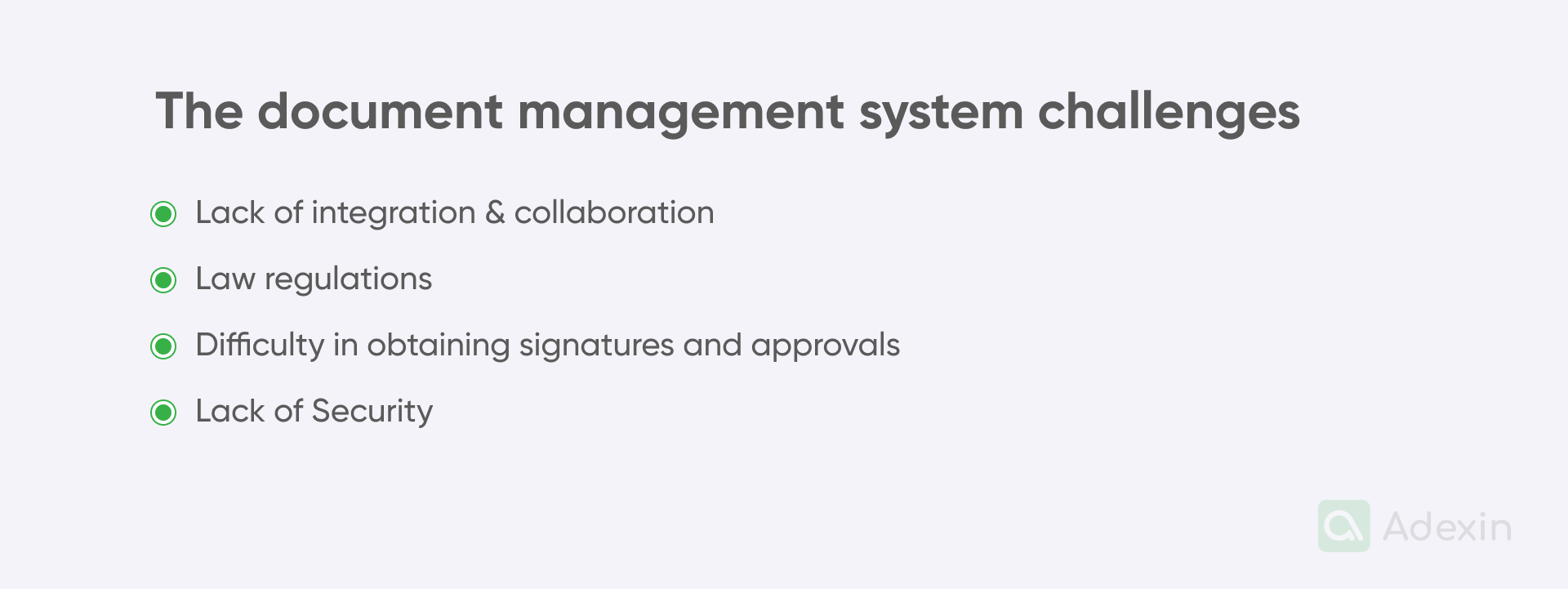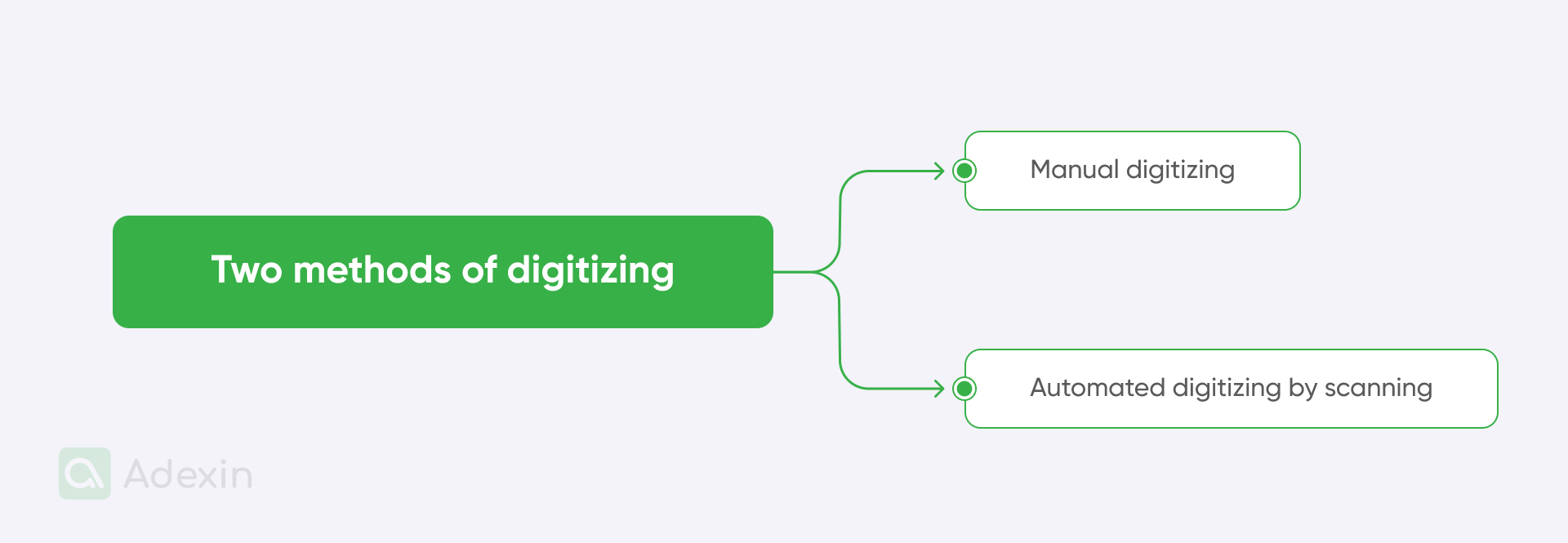Summary
Effective document management is crucial in the fast-changing world of logistics and transportation. A document management system (DMS) based on software has already revolutionized the way the transportation industry handles documents. Day by day, new features are exceeding the capabilities of DMS, from document imaging systems to one-click scanning.
DMS software digitizes and streamlines document management processes, responding to challenges such as lack of integration, regulatory compliance, difficulty obtaining signatures, and security concerns. It offers an online document management system, flexible indexing, strong security for document flow, integration capabilities, and simplified document routing. Below, you can get to know much more about how you can use DMS software for transportation and where you can benefit most from it. Let's take a look together at how you can improve your business.
What is a document management system?
Managing documents within an organization is becoming increasingly challenging due to the ever-increasing flow of documents and the need to archive them. To better handle the large volume of documents, companies in the transportation industry are implementing software-based document management systems (DMS). This approach is related to the process of digitizing records. DMS software is increasingly supporting the entire transportation industry, although paperwork will still be in the hands of various stakeholders for many years to come. Nevertheless, companies are moving toward completely replacing the current approach. And this is where the DMS software with many features comes into play, which can support various modes of transportation.

To better understand the meaning of a Document Management System, it is crucial to comprehend the challenges of managing documents within the organization. The transportation industry faces numerous challenges, some of which are mentioned below:
Lack of integration & collaboration
Documents flow within transportation requires easy access and data exchange across departments. This is directly connected to improved collaboration, transparency, and higher data accuracy. These elements are often missing in transportation, making day-to-day work much more challenging.
Law regulations
Transportation companies operating in international markets must archive most documents for several years. This requirement demands inventory space and easy access to documents, which is not always readily available.
Difficulty in obtaining signatures and approvals
Document management should be seamless when it comes to authorizing ongoing operations. Transportation companies that rely on paperwork struggle with this aspect, as most documents are transmitted via email. Scanned print copies with handwritten signatures are distributed in PDF format among various stakeholders.
Lack of Security
Documents are often not properly secured, with access to confidential documents not requiring authorization. They are easily accessible from the archive, and mismanagement can lead to accidental access by unauthorized individuals.
Understanding these challenges, we can now focus on how a DMS works. A DMS system represents a complete shift from paper documents to digital ones and should include functions for document management planning that allow defining how documents are collected, captured, stored, secured, and distributed.
Name | Explanation |
|---|---|
What are the two methods of digitizing?

The DMS solution is based on two primary methods of digitizing documents. Here are the two most common methods for digitizing documents used in a Document Management System:
Manual digitizing
Most of the documents used in transportation are still based on printed forms or templates filled manually by various stakeholders in the supply chain. All documents are stored in piles of paper and moved within the warehouse to selected locations on the pallets. Manual digitizing involves replacing these documents with digitized forms, allowing users to trace all the lines from their hardcopy maps using a pointer device (digitizer puck) on a tablet screen or any mobile device. They can then create an identical digital map on their computer. The document is filled in with digits and stored in that format on servers. [1]
Automated digitizing by scanning
Various documents in transportation are printed on paper and, for digitization, are scanned or captured as images using a mobile device equipped with OCR technology. OCR helps digitize documents in real time, converting handwritten characters on paper into digital text. This method is commonly used to improve document flow when only a paper version is available.
DMS management with digital documents

One of the most effective ways to streamline document management in the transportation industry is by adopting DMS solutions that fully support digital document flow. The DMS system allows you to create your own hub for the total number of contracts, invoices, shipping documents, and other previously used transportation paperwork. The DMS enables your organization to go far beyond only digitized documents. It can provide you access to any media materials that work for your business. Here are the basic features offered by:
File formats
Most DMS solutions support more than 300 document file formats, including JPEG, JPEG 2000, PNG, TIFF, PDF, DOC/DOCX, SVG, and more. With embedded readers, they enable the retrieval of all digital document formats available today on the market.
Indexing
The primary goal of DMS is to provide the transportation industry with fast access, which is facilitated by flexible indexing methods based on OCR, Barcode, Table lookup, Database lookup, and single-click entry. DMS should also support Unicode technology.
Security
As mentioned previously, DMS needs to offer high security and full compliance with QMS. In other words, DMS should ensure 256-bit encryption for computer/entity authentication, data confidentiality, and data integrity. Moreover, it should offer access control on features, folders, and documents, along with reporting and tracking for all users.
Integration
Digital documents managed by the DMS should be compatible with the most commonly used systems. They should support Microsoft Office document formats directly via ODMA connection and support batch document imports from back-office system BOS. Additionally, they should offer easy integration with well-known web services.
Document routing
This is a feature of DMS with a simple workflow and an alert notification system for users, along with task list panels that allow complete visibility of pending tasks.
Search
DMS allows users to search and retrieve desired images based on specific keywords (e.g., account number). It supports four types of searches: Simple search, Profile search, Full-text content search, and Advanced search.
Full media retrieval
Modern DMS should provide digital document formats for text material and support other media formats, such as pictures, visual instructions, videos, and tutorials for employees. These confidential training methods can help manage business operations at every scale.
Digital document management system for transportation
Document management applies to every industry that needs to process all operations. Mostly, it is integrated with the Enterprise Resource Management System (ERM), which is inherently project-oriented. Here are the most common systems in the transportation industry that can be integrated with DMS:
System | Explanation |
|---|---|
Integrating a DMS into these systems optimizes document handling and can contribute to improved data management and compliance across the organization. [2]
Document digitisation with paper document scanning feature
DMS software is dedicated to desktop and mobile. Transportation companies are able to use a scanning feature that can be built into the software, allowing for scanning new documents or converting archives into digital format. Here is what a typical document scanning procedure looks like:
Scanner сonfiguration
DMS offers integration with mobile devices equipped with a camera. Before capturing a document image, configure the scanning function to enable users to digitize physical documents and upload them to a server.
Scanning documents
Before commencing the scanning process on a mobile device, it is advisable to use modern and reliable scanners. This allows for efficient task execution without workflow disruptions. Additionally, some printers utilize advanced image-cleaning techniques to ensure the highest possible quality of the original documents.
Image production
After scanning, the captured images can be exported in formats like PDF or TIFF for seamless integration into existing business systems. This grants the team instant access to data from scanned documents. Time is of the essence!
Results
Converting from paper to digital creates a highly productive, environmentally friendly, and efficient workplace that promises significant benefits.
Document imaging with one-click
Among the various features of DMS that enhance work in transportation is the one-click document imaging solution. An automated workflow in DMS software allows for quick document detection and enables direct scanning and categorization of documents, which can then be added as email attachments. This proves exceptionally beneficial for truck drivers who need to quickly share shipping details or other documents while on the road.
This feature is of great help because truck drivers operate under time constraints, and administrative tasks can be frustrating for them. By utilizing the one-click feature, they can save valuable time.
Additionally, this feature is also highly valuable for transport administrators who receive documents from drivers and require prompt reference from their supervisors. They can effortlessly share captured images of transport documents with just a single click.
Benefits of DMS software
The DMS software with embedded document scanning functions can offer a multitude of benefits for transportation companies.
Time savings
Automated scanning reduces the time spent on manual data entry and document organization among transport administrators.
Reduced errors
Automation minimizes the risk of human error associated with manual data input, which is frequent in the case of documents with high frequency in the organization's workflow.
Cost reduction
The paperless approach results in cost savings on physical storage in warehouses and reduces the need for paper supplies in transportation. It eliminates the requirement for hardcopy documents for every stakeholder in transportation, which is often a necessity.
Reduces storage space
Modern DMS with digitized documents eliminates the need for physical storage, saving money and creating space for organizational improvements.
Enhanced Security
DMS enhances security through features like digital archiving, automated backups and deletions, document annotation and redaction, role-based permissions, and multifactor authentication. These measures safeguard business data and integrity.
Effortless workflow
A DMS not only significantly improves document flow speeds but also enhances document retrieval speeds, reducing the time employees spend searching for documents.
Wrapping up
The transportation industry can greatly benefit from implementing a proper document management system (DMS). This software can streamline daily operations in the rapidly changing world of logistics and transportation.
At Adexin, we help companies in the transportation industry develop software solutions that improve their overall operational efficiency. We have real case examples where we have already helped many companies with their document management processes. Companies that work with us can expect a visible return on investment (ROI). Contact us anytime, and let's talk about document management in your organization.
References:
[1] Retrieved from: http://ccnet.vidyasagar.ac.in:8450/pluginfile.php/1948/mod_resource/content/2/2ND%20SEM%20CBCS%20RSG%20204.2%20DIGITIZATION%20%281%29.pdf
[2] Retrieved from: https://www.tdx.cat/bitstream/handle/10803/6160/04Nfm04de12.pdf;sequence=4
